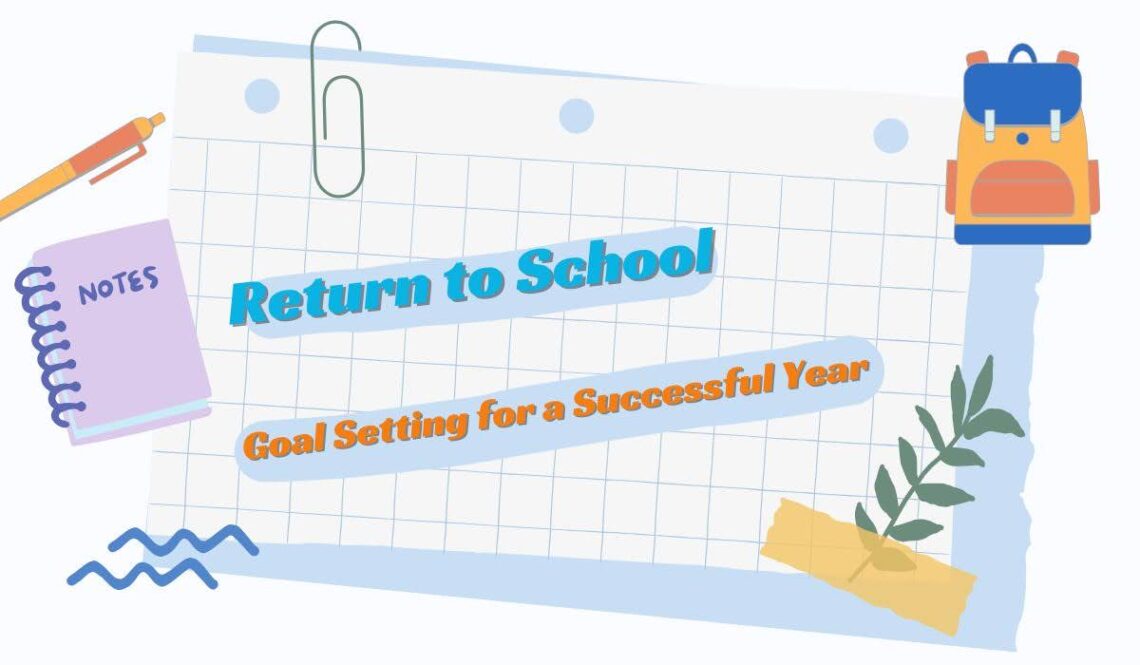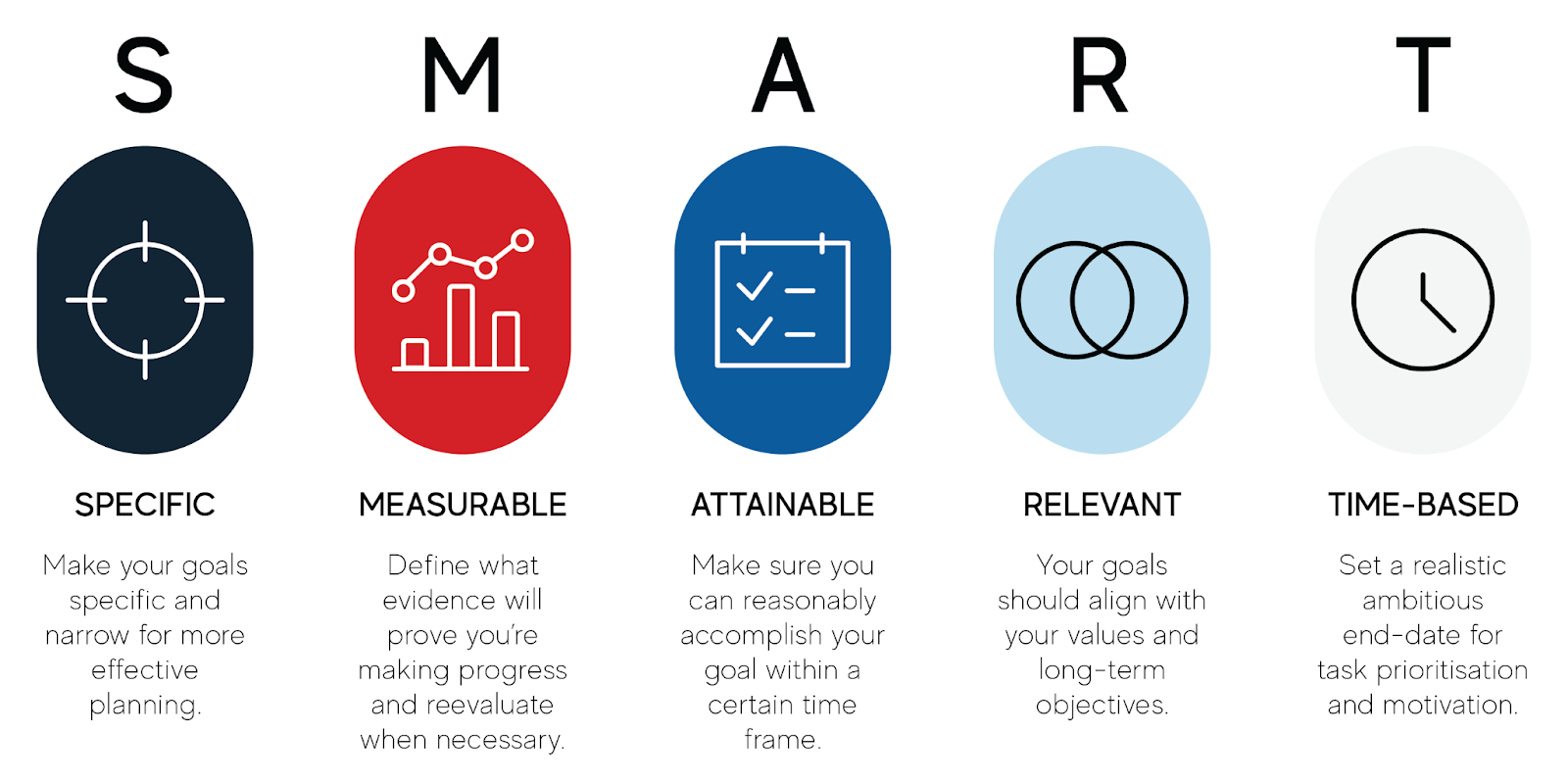
Return to School – Goal Setting for a Successful Year
The return to school brings a mix of excitement, nerves, and anticipation for students, parents, and educators alike. It’s a fresh start—a chance to reflect on past achievements and challenges, while looking forward to new opportunities. Setting clear, realistic goals at the start of the school year provides direction, motivation, and a foundation for long-term success. Whether you’re a student preparing for exams, a parent aiming to support your child’s growth, or a teacher looking to inspire your class, goal setting can make all the difference.
Why Goal Setting Matters in Education
Goal setting is more than just writing down aspirations; it’s a powerful tool that promotes accountability, focus, and a sense of purpose. For students, it instills discipline, encourages time management, and builds resilience. For educators and parents, it provides a framework to support children’s development while fostering a positive learning environment.
Research consistently shows that students who set clear goals are more likely to stay motivated, improve their performance, and handle setbacks with confidence. Goals also help students manage stress by breaking large tasks into smaller, more manageable steps.
Key Types of Goals for Students
When setting goals, it’s important to consider both short-term and long-term aspirations. Here are the main types of goals students can set:
1. Academic Goals
Academic goals focus on educational achievements and learning progress. Examples include:
- Improving specific subjects (e.g., “I will try my best in my maths this term”).
- Completing homework and assignments on time.
- Preparing effectively for exams and assessments.
2. Personal Development Goals
These goals centre on skills and qualities that contribute to overall growth:
- Developing better study habits, such as creating a consistent study schedule.
- Improving time management skills to balance schoolwork and extracurricular activities.
- Enhancing confidence by participating in class discussions or public speaking activities.
3. Social and Wellbeing Goals
Social and emotional wellbeing is essential for a successful school year. These goals might include:
- Building new friendships or strengthening existing ones.
- Practising self-care routines to manage stress and maintain mental health.
- Participating in sports, hobbies, or creative activities that bring joy and relaxation.
The SMART Framework for Goal Setting
To set effective goals, use the SMART framework. SMART stands for Specific, Measurable, Achievable, Relevant, and Time-bound. Here’s how to apply it:
- Specific: Be clear about what you want to achieve. Instead of saying “I want better grades,” specify “I want to improve my science ability by focusing on practical experiments and revision.”
- Measurable: Set goals that allow you to track progress. For example, “I will study for 1 hour each day after school.”
- Achievable: Ensure goals are realistic and within your control. Ambitious goals are great, but they need to be attainable to maintain motivation.
- Relevant: Align goals with your personal priorities and long-term vision.
- Time-bound: Set deadlines or milestones to stay focused. For example, “I will complete my book report by the end of this week.”
By using the SMART method, students can break overwhelming tasks into smaller, actionable steps and celebrate achievements along the way.
Supporting Goal Setting as a Parent
Parents play a vital role in helping children set and achieve their goals. Here are a few strategies to provide guidance and encouragement:
- Have Open Conversations: Talk to your child about their aspirations, fears, and challenges. Encourage them to think about what they want to achieve and why.
- Teach Prioritisation: Help your child identify what’s most important and create a realistic plan to manage their time.
- Celebrate Progress: Acknowledge and celebrate small wins to keep motivation high.
- Model Goal Setting: Share your own goals and demonstrate the value of perseverance and planning.
Empowering Goal Setting in the Classroom
Teachers play a crucial role in fostering a goal-oriented mindset in students. Here are some ways educators can encourage effective goal setting:
- Start the Year with Goal-Setting Activities: Dedicate time at the beginning of the term for students to write down their goals and reflect on their learning journey.
- Track Progress: Use tools like charts, journals, or progress boards to monitor students’ goals and celebrate milestones.
- Teach Growth Mindset: Remind students that challenges are opportunities to learn and improve, and that setbacks are a natural part of the process.
- Provide Feedback: Offer constructive feedback to help students refine their goals and stay on track.
Tips for Staying Motivated
While setting goals is important, staying motivated can be challenging. Here are a few tips to keep the momentum going:
- Break Goals into Smaller Steps: Achieving small wins helps maintain motivation and builds confidence.
- Stay Organised: Use planners, calendars, or apps to stay on top of deadlines and commitments.
- Visualise Success: Encourage students to imagine what achieving their goals will feel like and how it will benefit them.
- Stay Flexible: If circumstances change, adjust goals as needed without feeling discouraged.
- Create Accountability: Share goals with friends, parents, or teachers to stay accountable and seek support.
Balancing Ambition with Wellbeing
While striving for success is important, it’s equally essential to prioritise mental and emotional wellbeing. Encourage students to:
- Take breaks when needed and avoid overloading themselves.
- Practise mindfulness or relaxation techniques to reduce stress.
- Celebrate progress without comparing themselves to others.
- Seek support from teachers, parents, or counsellors if challenges arise.
Returning to school is the perfect opportunity to set meaningful goals, embrace growth, and work towards success. By using structured goal-setting approaches like the SMART framework, students can stay focused and motivated throughout the year. Parents and educators have an important role in creating environments where children feel supported and empowered to achieve their aspirations.
Remember, goal setting is not just about academic performance—it’s about fostering resilience, personal development, and a balanced approach to life. When students learn to set goals and pursue them with confidence, they build habits that will serve them well for years to come.








